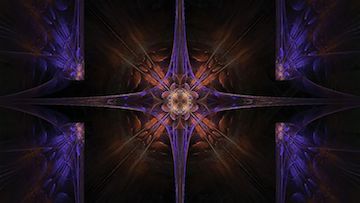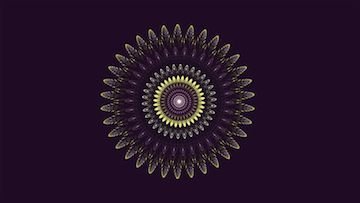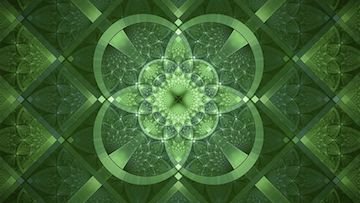Liberating Insight
The Nine Successive Cessations In buddhist Meditation

The Nine successive cessations (anupubba-nirodha) as mentioned in the Anguttara Nikaya are the progressive ‘levels’ in meditation that include the 4 form jhanas, the 4 formless jhanas, and finally the state of cessation of perception and feeling.
These are also called the nine progressive cessations, and referred to as the nine progressive dwellings, where it is clear that ‘dwelling’ truly means a ‘state of mind’ and not a physical location or preferred dwelling like a quiet place or cave. (AN IV.410)
The goal of these meditations is the destruction of the taints.

Now that the attachments and clinging to forms and materiality have been dealt with as objects of meditation and ceased as appearances in the mind, the attainment of the base of infinite space in the mind is the first station of the formless jhanas.
By the attainment of the Base of Infinite Space (akasanancayatana), the perception of forms ceases.
“I say of [that state] where perceptions of forms cease and of those who dwell having thoroughly ended perceptions of forms:

‘Surely, those venerable ones are without hunger and quenched, have crossed over and gone beyond in that particular respect.’
If anyone should say:
‘Where do perceptions of forms cease? And who are those that dwell having thoroughly ended perceptions of forms? I do not know this, I do not see this,’
he should be told:
‘Here, friend, with the complete surmounting of perceptions of forms, with the passing away of perceptions of sensory impingement, with non-attention to perceptions of diversity, [perceiving] “space is infinite,” a monk enters and dwells in the base of the infinity of space.
That is where perceptions of forms cease and those are the ones who dwell having thoroughly ended perceptions of forms.’” — AN IV.412

The second formless jhana is a cessation of the previous base of the first jhana, in that the subsequent station is more subtle as an object of meditation than the previous step.
By the attainment of the Base of Infinite Consciousness (vinnanancayatana), the perception of the Base of Infinite Space ceases:

“I say of [that state] where the perception of the base of the infinity of space ceases and of those who dwell having thoroughly ended the perception of the base of the infinity of space:
‘Surely, those venerable ones are without hunger and quenched, have crossed over and gone beyond in that particular respect.’
If anyone should say:
‘Where does the perception of the base of the infinity of space cease? And who are those that dwell having thoroughly ended the perception of the base of the infinity of space? I do not know this, I do not see this,’
He should be told:
‘Here, friend, by completely surmounting the base of the infinity of space, [perceiving] “consciousness is infinite,” a monk enters and dwells in the base of the infinity of consciousness.

That is where the perception of the base of the infinity of space ceases and those are the ones who dwell having thoroughly ended the perception of the base of the infinity of space.’” — AN IV.413

Just like the second formless jhana was a cessation of the previous base of the first jhana, the same holds true for the third jhana in relation to the second jhana. The subsequent station is more subtle as an object of meditation than the previous step.
By the attainment of the Base of No-Thingness (akincannayatana), the perception of the Base of Infinite Consciousness ceases:
“I say of [that state] where the perception of the base of the infinity of consciousness ceases and of those who dwell having thoroughly ended the perception of the base of the infinity of consciousness:

‘Surely, those venerable ones are without hunger and quenched, have crossed over and gone beyond in that particular respect.’
If anyone should say:
‘Where does the perception of the base of the infinity of consciousness cease? And who are those that dwell having thoroughly ended the perception of the base of the infinity of consciousness? I do not know this, I do not see this,’
He should be told:
‘Here, friend, by completely surmounting the base of the infinity of consciousness, [perceiving] “there is nothing,” a monk enters and dwells in the base of no-thingness.
That is where the perception of the base of the infinity of consciousness ceases and those are the ones who dwell having thoroughly ended the perception of the base of the infinity of consciousness.’” — AN IV.413

The final formless jhana abides and is a cessation of the third jhana, where the explanation of neither perception nor non-perception is the base, meaning that the duality of perceiving with the mind and non-perceiving with the mind are both transcended in meditation.
By the attainment of the Base of Neither-Perception-Nor-Non-Perception (nevasannanasannayatana), the perception of the Base of No-Thingness ceases:
“I say of [that state] where the perception of the base of no-thingness ceases and of those who dwell having thoroughly ended the perception of the base of no-thingness:
‘Surely, those venerable ones are without hunger and quenched, have crossed over and gone beyond in that particular respect.’
If anyone should say:
‘Where does the perception of the base of no-thingness cease? And who are those that dwell having thoroughly ended the perception of the base of no-thingness? [414] I do not know this, I do not see this,’
He should be told:
‘Here, friend, by completely surmounting the base of no-thingness, a monk enters and dwells in the base of neither-perception-nor-non-perception.

That is where the perception of the base of no-thingness ceases and those are the ones who dwell having thoroughly ended the perception of the base of no-thingness.’” — AN IV.414
The Final Cessation

By the attainment of the Cessation-of-Perception-and-Feeling (sannavedayitanirodha), perception and feeling cease. This is the final cessation that is the final station in jhana meditation.
“I say of [that state] where the perception of the base of neither-perception-nor-non-perception ceases and of those who dwell having thoroughly ended the perception of the base of neither-perception-nor-non-perception:
‘Surely, those venerable ones are without hunger and quenched, have crossed over and gone beyond in that particular respect.’
If anyone should say:
‘Where does the perception of the base of neither-perception-nor-non-perception cease? And who are those that dwell having thoroughly ended the perception of the base of neither-perception-nor-non-perception? I do not know this, I do not see this,’
He should be told:
‘Here, friend, by completely surmounting the base of neither-perception-nor-non-perception, a monk enters and dwells in the cessation of perception and feeling.
That is where the perception of the base of neither-perception-nor-non-perception ceases and those are the ones who dwell having thoroughly ended the perception of the base of neither-perception-nor-non-perception.’” — AN IV.414
The question is sometimes asked: How can one feel happiness or bliss when ‘nothing is felt’ in the 9th jhana (cessation of perception and feeling)?
A sutta in the Buddhist teachings explains it through a question and answer between Sariputta and Venerable Udayi:
The Venerable Sariputta said this:
“Happiness, friends, is this nibbana. Happiness, friends, is this nibbana.”
When this was said, the Venerable Udayi said to the Venerable Sariputta:
“But, friend Sariputta, what happiness could there be here when nothing is felt here?”
[and Sariputta answers]
“Just this, friend, is the happiness here, that nothing is felt here.” — AN IV.415
The “nothing is felt here” refers to the afflictions that still existed and were ‘felt’ in the meditator prior to nibbana, and the various afflictions that were felt in each stage of jhana. Having extinguished these afflictions in the progressive stages, is the happiness that Sariputta mentions.
And finally, a nice analogy of the archer, where it is compared to the steps of the successive destruction of the taints

“Just as an archer or an archer’s apprentice undergoes training on a straw man or a heap of clay, and then at a later time becomes a long-distance shooter, a sharp-shooter, one who splits a great body.” — AN IV.423
“And how is a monk a long-distance shooter? Here, any kind of form whatsoever—whether past, future, or present, internal or external, gross or subtle, inferior or superior, far or near—a monk sees all form as it really is with correct wisdom thus: ‘This is not mine, this I am not, this is not my self.’ Any kind of feeling whatsoever . . . Any kind of perception whatsoever . . . Any kind of volitional activities whatsoever . . . Any kind of consciousness whatsoever—whether past, future, or present, internal or external, gross or subtle, inferior or superior, far or near—a monk sees all consciousness as it really is with correct wisdom thus: ‘This is not mine, this I am not, this is not my self.’” — AN II.171

“And how is a monk a sharp-shooter? Here, a monk understands as it really is: ‘This is suffering.’ He understands as it really is: ‘This is the origin of suffering.’ He understands as it really is: ‘This is the cessation of suffering.’ He understands as it really is: ‘This is the way leading to the cessation of suffering.’” — AN II.171

“And how is a monk one who splits a great body? Here, a monk splits the great mass of ignorance.” — AN II.171
I will flag comment spam at 1% strength. If you keep on spamming my post, I will flag you at 100%. I don't care if you have limited English abilities, write a couple of sentences about this article, no copy-paste, please. I will flag: one sentence comments, links to your blog and begging for up-votes and follows. Also, I will åflag comments that have nothing to do with my blog's article. I will also check your comment section to see if you have been comment spamming on other blogs.


 A link to My Blog
A link to My Blog
I love reading about this you learn a lot, we can avoid the daily thieves of your energy. control the mind, body and spirit, through meditation and find the right direction to achieve our goals and objectives.
It is true, negative mind states sap our energy and confuse our mind...the side effect of practice, the goal is enlightenment, the side effect is clarity and contentment...
That's right, thanks for sharing such valuable information. That's why I follow you and support you every day
The Sufis remove the stain also premises:
1.fasting to eat
2.to talk
3.Sleeping fast
their level in achieving their success is called "maqam"
their maqams are:
1.maqam saalikin
2.maqam muuridin
I found this online, I will have to look into my books related to Sufi practice, they are not online and there is no digital books I can access...
When in retreat we take noble silence, we don't not talk, we don't induldge in sleep but get enough to keep healthy, and we only eat 2 meals a day.
When out of retreat we eat to feed the body, talk only when helpful, and sleep for the health of the body.
the rest of the text is in arabic ... The practice is very strict..
This is a PDF
https://ejournal.um.edu.my/index.php/JUD/article/download/5078/2915
in the Sufi istiah destruction of the stain is called "taubat nashuha", this stain itself is called dausa "agyar wahmiah" which includes to:
1, love of wealth
2, love to splendor
3, love to rank and position
the destruction of the stain is done by "khulwah" and fasting.
so to the level of lust "muthmaunnah"
Khulwah and Muthmaunnah
I've read Khulwah is strictly enforced, men and women are segregated so there is no chance of temptation and if the rule is broken the strict judgment is enforced especially for the woman...
In Buddhism it is the individual must find it within them selves to let temptation go, it is dissolved, let go, abandoned through shamatha practice. If temptation is fed through action one pays the ultimate price, which is karmic debt...seeds of lust are planted, which may sprout in this life or the next, which will cause endless misery.
When we go to retreat at my vipassana meditation center we only have two meals a day...the last meal is taken at noon, the first meal is taken after we get up at 4:30 in the morning and meditate for 3 hours...then we break fast. I fast for 3 days at a time to help my body heal once or twice a month and I practice intermittent fasting, eating small nutritious meals between a six hour window, my last meal is taken 5pm. This helps my aging body retain its health and vigor.
The Buddha fasted to the point of death and realized this wasn't the way to freedom. A young girl found him near death and brought him milk curds and rice. She saved his life and once he recovered redoubled his efforts to find the way out of suffering using shamatha and vipassana whilst he went through the levels of jhanas...finally breaking free of samasara the endless rebirth into negative mind states.
Taubat nashuha.
I looked up Muthmaunnah and found this...
http://www.zaynabacademy.org/understanding-the-three-types-of-nafs/
وَاذْكُرْ رَبَّكَ فِي نَفْسِكَ
And remember your Rabb inside your-self
I salute you with your quick understanding of the problem of khulwah and lust, thank you for sharing my knowledge with me
I forgot to mention when I go to Buddhist retreat men and women are strictly segregated just for this reason. It is very distracting! Thank you for sharing you wealth of knowledge @steemitcountry and we can develop common ground and understanding through the virtues which are shared throughout our common religions.
I am also glad to get additional enlightenment from you, at least when I teach my students about Sufi I can explain you @deddust and your thoughts, I am sure my students are very happy to hear it
It really is amazing to read all this and see what our mind is capable of. I also love to nourish myself with all this information. read your post is to be constantly learning. I hope you are fine
I am happy you enjoy my Dhamma articles. Sharing this information is a way of honoring my teachers, I hope I don't embarass them through my ignorance....it's easy to write about this topic but very difficult to practice.
I asked you some question from you @reddust. What do you think, how much time use for daily meditation per one person? I don't mind and I think if we can meditate easily and using silence location 30 minutes better. But you have longer experience. So I want your answer very important. Explanation here so excellent.
From my experience there are two ways to meditate daily at home. From my Tibetan teachers they say start out with a small amount of time, like 15 to twenty minutes a day. Always meditate at the same time if you can and in a safe special place dedicated to meditation. This applies to all meditations no matter the tradition when you first start out... This helps build the habit. Then you add more time as sitting becomes comfortable .... meditation really isn't comfortable because we are letting go of stuff we have been holding onto for a long time...we also are letting go of boredom and aversions too...its not easy
My Korean Zen teacher sent me to a 10 day vipassana retreat and I was thrown head first into deep water, sink or swim. I learned to swim one hour at a time, ten hours a day, for ten days. I learned to swim through all the crap floating around in my mind, when the pain became horrible I learned to surf sensation, when boredom came, I was thankful and finally I learned to relax and took amazing trips full of lights and bliss, but then more crap came up, crap like intrusive thoughts, overwhelming emotions, horrible pain in my back and I stopped looking forward to the pretty lights and bliss....hahahaha
Eventually everything evened out after a couple retreats...gosh I was thankful, I had no idea how powerful the mind is and how what I thought was real really isn't...
I took what I learned from retreat I took home and meditated one hour in the morning and one hour in the evening for almost ten years. Now I do other practices in the evening but I still meditate one hour in the morning.
Meditation as I’d love to talk a little bit on this.
Meditation some people believe is an exercise, yes it is an exercise but for the soul, it’s considered as a state of communicating with the inner person, the environment and the mind. Yoga is a form of meditation and I can say yoga is an exercise for the soul. Just sharing the little I know I’m relation to the word meditation as it’s been mentioned in your post
How do you know you have a soul @olumideolowyeye? You say you have a soul because someone else told you? Have you seen it? Meditation helps peel away the layers of conceptualization, all those labels and blind reactions to things we like or don't like so we can see who we really are or are not....What is a soul, who are you? When you reach one pointed concentration, calm abiding, turn around a check who is watching the jhana light show...hahaha <3
Well I’m religious and in my religion, we read and made to understand through our holy book that we all do have a soul and that is what is going to eternity as the body we see now will die away. I believe there’s a life after this and I believe the soul proceeds to that life after this body is no more .
@reddust, Better explained of Nine Successive Cessations In buddhist Meditation. I love to read again and again your meditation articles. It would be more informative to control our mindset.
Yep..Agree with above content as you mentioned here. Meditation can remove every stress and negative thoughts. I'm seriously tell you that, I have did meditation using temple background and I have felt more cool feelings and I could remove my bad feelings with my errors. Buddha found and then shown us best way to go further success way. Appreciated task by you.
I've been practicing for years at retreat and home, then integrating and I still feel like a baby...however, my temper is 3/4 gone compared to my youth...but that may be old age too...I'm a nice even tempered grandma now...hopefully when I die I can maintain my evenness ;)
The coolness of emotions surpasses any kind of happiness @madushank, congratulations.
Buddha got his all solution by his deep meditation.... we can follow him if we can't control our mind or fail in our mission. Only true meditation is the solution to control our mind.
I like Buddha's story of trying to find the right teacher and the right meditation. The Jhana's were his last try through traditional systems. They helped him for sure! However he had to find his own way ... no one could help him and no meditation method could break the final subtle clinging ...he had to do the last bit on his own.... leting everything go....
Lord Buddha found every ways how to control humans thoughts. He spend much time and finally seek better way. Meditation is best way to manage thoughts. But not enough it. Need to sacrifice and patience. Don't happen worst things still meditation. I want some time to understand some of your contents. Thanks.
@templeflower sacrifice is a good word to use when letting things we crave go...patience, well that indeed is a virtue we all need to live in this world...I am sure you can find this information in your language...English can be difficult <3 Thank you for your patience and kindness <3
To gain control we must first let us submit our ego any vanity....
Discpline with primary meditation like shamatha is needed first before attaining higher meditation like the jhanas...in the end one has to let all things go....I can't imagine doing that right now...hahaha <3
Yeah it the advanced stage..